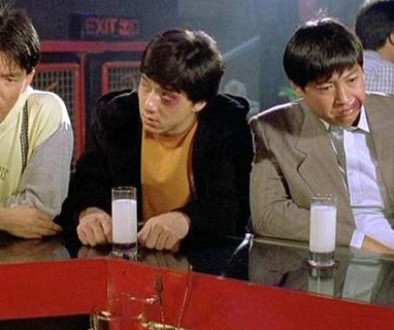Japan Cuts XVII Review: Tominaga Masanori’s BETWEEN THE WHITE KEY AND THE BLACK KEY Hits the Right Note
3 min. read
On a nostalgic New Year’s Eve in late 80s Ginza, aspiring jazz pianist Hiroshi (Ikematsu Sousuke) quits his cabaret pianist job because he doesn’t feel that he can grow there as a musician. As he begins traveling the nightime world of Ginza bar musicians, players who go to neighboring clubs and bars to play music, he becomes embroiled in the complex ecosystem of artists and gangsters out to ring in the new year. With his upperclassman Chikako (Naka Riisa) to give him guidance, he encounters a foreign singer (Crystal Kay), a fresh out of prison yakuza with a vendetta (Morita Go), and a well regarded bar pianist Minami (also Ikematsu) who also finds himself caught up in the chaos the night will bring.
Adapted from an essay by esteemed jazz pianist Minami Hiroshi, Between the White Key and Black Key isn’t so much a biopic despite the protagonists sharing his name insomuch as a meditation of aesthetics. Playing with time, perspective, and, most importantly, mood, Director Tominaga creates a breezy nighttime story of exploration and arrival. So many of the characters don’t have any obvious goals in the film, other than making it through the night, and those that do would be lucky to see those plans come to fruition smoothly.
Ikematsu’s Hiroshi is naive and hungry, willing to jump into the not-so-well-oiled machine of nightlife music. He’s a little over his head but willing to jump into the game. By contrast, Ikematsu’s Minami is a cold and jaded musician who feels like he has lost his way by playing for the clientele of unappreciative listeners. His motivation is the strongest in the film and is the real crux of the film . The duality explored between these two characters is dynamic, both in terms of playing technique and through their interactions with the numerous other characters peppering the streets of Ginza.
A strong supporting cast helps to populate the handful of bars, clubs, alleyways, and cafes where our characters tell their stories; Naka as a solid pillar, Takahashi Kazuya as put-upon bandleader, and wondering saxophonist Matsumaru Kei to enforce the power of music. Morita’s slapstick-ey turn as a yakuza looking to settle a vendetta brings some nice levity to the picture as well as a strong vocalist turn by multi-platinum R&B singer Crystal Kay add some splashes of color in the midst of all the smoky rooms and gaudy furnishings of bubble-era Tokyo.
While Between The White Key And The Black Key is fairly straightforward, as far as narrative structure, the final act is destined to be divisive; it’s more a meditation of an artist’s mind and just as much about self doubt as it is determination. It’s a final act that is quietly disarming but it achieves it’s goal. Wholly engaging, Tominaga’s film is an eccentric journey that is filled with lovely music, emotive performances, and more than a little self reflection.
Between The White Key And The Black Key was reviewed for Japan Cuts which runs from July 10 through 21.




